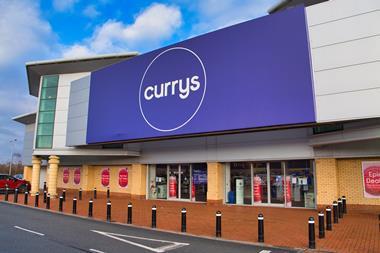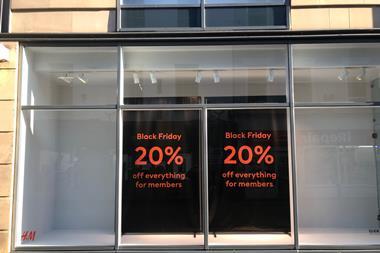Retailers are employing journalists to write for their web sites, making videos and publishing their own magazines to engage customers. Other trends include communicating directly with customers through social networking sites and an evolution in affiliate marketing.
So how is technology helping retail advertising and marketing evolve?
Editorial is popping up on sites all over the place. Anthropologie executive director of marketing Michael Robinson is a big advocate of editorial content. The retailer has been selling online in the UK for about six months and is mulling sites for a London store.
On Anthropologie’s site, editorial is used to create a similar customer experience to in its US stores, where staff are given much control over creating unique visual presentations.
For instance, Robinson says that the site shows customers how they can bring its unashamedly feminine homewares products into their own homes without alienating their husbands. Roomsets are created in Flash, with lots of product details and video is used to explain the design of the room.
Other features of the site include the highlighting of new looks and trends. Robinson says the company is careful not to tell its customers what they should be wearing, but rather ignite their own imagination. He explains: “We don’t say: ‘This is a trend’. We just highlight things.”
Producing results
Anthropologie also publishes a hard copy and e-catalogue, which has a magazine feel instead of using a traditional catalogue grid design. The retailer does not track the percentage of sales that come through its e-catalogue, but Robinson is certain it produces results.
Affiliate Window communications director David Hall, whose firm works with many retailers on their affiliate marketing programmes, strongly believes in retailers offering editorial through their web sites, for example, as Boots has done with the relaunch of its web site this autumn.
He says as the health and beauty retailers will pay people to demonstrate in their stores, the web sites might deliver more traffic than any store so it makes sense to also employ someone to do a similar job on their sites.
Boots has employed an ex-Grazia journalist to publish a blog on its site and is now beginning to add video to its site too. It is believed that Boots plans to launch a full online TV channel.
Video advertising is a more contentious issue. You can certainly find the TV adverts of many high street names searching YouTube, but creating video specifically for the web is still in its Infancy.
However, Hall thinks that DSGi’s plan to let customers post video reviews on its sites could be a great way to generate content that could then be used around the web to drive traffic to its sites.
Retailers are also making more noise about recruiting individual consumers to act as online advocates. On the subject of a tie-up with Facebook, Otto UK head of e-commerce Chris Poad recently said: “It is easy to imagine a way in which we could have a micro affiliate relationship with customers.”
He added: “The Facebook application is just an idea at the moment, but the model makes sense to me. Shopping for fashion is a social experience.” However, he added that while social networking has great potential for customer acquisition, he recognises that retailers will have to provide something worthwhile if they want to exist in what is a very private world.
Digital consultancy Conchango senior business consultant Dan Wilkinson says letting consumers become affiliates is one of the most exciting developments in online marketing and should be something that retailers that already work with the affiliate model should not find too difficult to adopt.
Retailers such as Asos and Topshop have been able to harness these online networking sites, although at the moment this seems to be more to communicate with customers than to get them to recommend products to their friends.
Asos now has about 45,500 “fans” who have linked to its Facebook page and the e-tailer is very proactive at sending out regular updates to this audience with competitions, offers, free delivery codes and first looks at its latest products.
However, this is not right for every retailer – even those who are not afraid to experiment with new technology. Robinson, for example, says Anthropologie will not target Facebook. “I think our customers are maybe a little younger online, but that is not who we target. Everything we do is with 35-year-olds in mind, so there will be no Facebook or MySpace applications. We are talked about a lot, but we don’t want to cater to that market,” he explains.
Anthropologie has also experimented with a type of desktop-based digital catalogue. All the product information is downloaded to a customer’s desktop and the application reaches out to the internet only when the customer wants to order something. Robinson says that while there were aspects of it that the company liked, customers found it too much of a high-tech experience.
Advertising alternatives
Among younger consumers, alternative methods of advertising are proving fruitful. For instance, mobile phone network Blyk has been set up to offer 16-24 year olds free phone calls and texts in return for receiving marketing messages to their phones.
Blyk UK chief executive Shaun Gregory says that he can guarantee response rates that are ahead of every other form of media, as long as the brand is clear about what it is trying to achieve in terms of engagement or brand awareness. He adds that young people are such a transient audience that the only way to reach them is on the move.
House of Fraser has just run a campaign using the Blyk network and Boots worked with the network in the run-up to Christmas last year.
The Boots campaign promoted sales of fragrance gift sets. MMS and SMS messages were sent to Blyk members in early December and just before Christmas. Messages were delivered between 9am and midday on Saturdays to try to reach consumers prior to shopping trips. One in seven members responded to the campaign and about 70 per cent agreed to receive follow-up offers.
Meanwhile, even more established online advertising models, such as affiliate marketing, are being shaken up, as retailers want to understandmore clearly what their customers are doing before they make purchases.
Hall says that retailers will no longer tolerate a lack of visibility. For instance, he says they want to understand issues such as why 30 per cent of their affiliate traffic comes from a voucher code site even though the retailer does not offer voucher codes.
Rewarding affiliates
Affiliate Window has launched an analytics tool for merchants to give them better information on what the customers are doing on their affiliates’ sites. The information can also help merchants decide how effective a landing page is for converting affiliate traffic.
Hall says that this type of analysis is most important for merchants dealing with their middle-tier affiliates – those that they do a reasonable amount of business with but want to grow.
At the same time, there is increasing debate about whether the right affiliates are being rewarded, when customers might make multiple visits to an e-commerce site before making a purchase, or even make the purchase decision online but complete the transaction offline.
Hall asks: “We have to accept that we can’t know it all. But should a retailer accept that they are not rewarding affiliates that deliver traffic [if the subsequent purchase is offline]?”
Neither the pay per click or cost per acquisition model may be enough by themselves. Hall believes that what may be needed is a hybrid model where affiliates are paid partly on the cost per acquisition model plus a fixed amount for the retailer having tenancy on their site.
Wilkinson adds that retailers are also reassessing how they account for the money spent on affiliates. He says that larger retailers are now having conversations about moving a portion of spend on affiliates into their general cost of sale figures, rather than cost it to marketing. He says that those who pay affiliates from marketing budgets are having to reforecast their budgets every month to accommodate affiliate spend.
He concludes that retailers need to understand their visitors, rather than individual visits, if they want to bring down their marketing spend, because they may be double-counting.
Experimentation will be the only way that retailers can decide which of these new and innovative marketing channels will work for them, but it seems clear that whatever choices you make, being able to measure and analyse what actually makes a difference is essential.
Mobiles still for messaging, not shopping
Retailers still view mobile phones as a communication channel rather than a transactional one, according to research from mobile marketing agency Sponge.
About half of the retailers surveyed have used SMS as a channel for consumers to respond to more traditional press and TV advertising. In total, 70 per cent use mobiles to communicate with their customers. Sponge found that 40 per cent of these use messages to send product information while a further 40 per cent use SMS to send stock alerts and delivery time confirmation, and 20 per cent said they inform their customers of special offers.
However, in comparison, only 20 per cent allow customers to purchase goods through a mobile sales channel.


























No comments yet